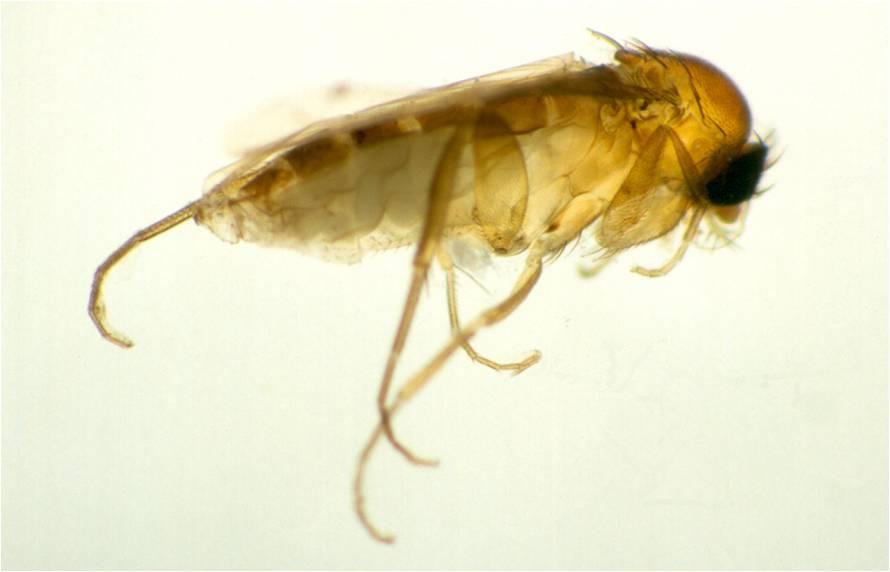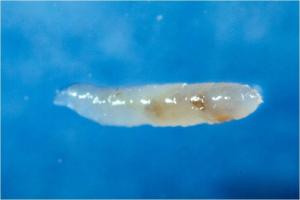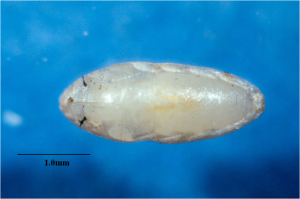Insect pests of mushrooms: Phoridae
Areas of Expertise:
Grassland and Plant Science
Service:
Research & Development
Adult phorids are slightly smaller (2-3 mm) but more robust flies than sciarids. They are darker in colour with a hump-backed appearance with no obvious differences between male and female flies.
Phorids


Each female can lay up to 50 eggs in close proximity to developing mycelia. Phorid larvae are off-white, legless maggots without a distinct head capsule (cf sciarid larvae). The anterior region narrows to a point while the posterior is blunt with small protuberances. An economic threshold for phorids has not been determined but it is estimated that 50-60 larvae/125g of compost would cause 0.5% total yield loss.

Phorid life cycle

- After mating, adult females are attracted to developing mushroom mycelia in spawned compost.
- The compost remains attractive to adult females throughout the entire spawn-run period, and is particularly susceptible during the second week.
- Mycelial development, which occurs following casing, renews attraction to adult females.
- Each female can lay up to 50 eggs in close proximity to developing mycelia.
- Duration of the life cycle is temperature dependent and will vary in relation to the environmental conditions associated with cropping periods.
- Increased air temperatures associated with spawn-run and case-run periods facilitate life cycle completion in 24-26 days.
- The lower temperatures following breaking and during cropping periods may extend the life cycle to 40-50 days.